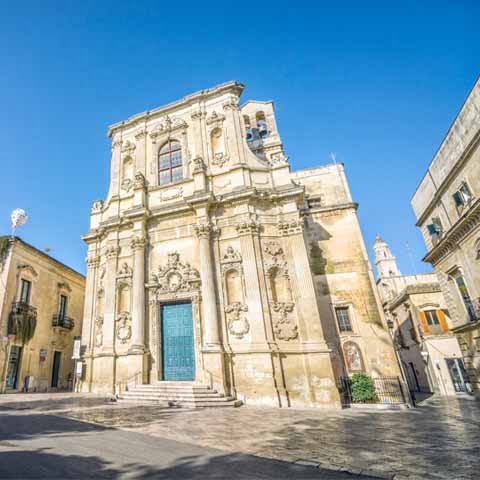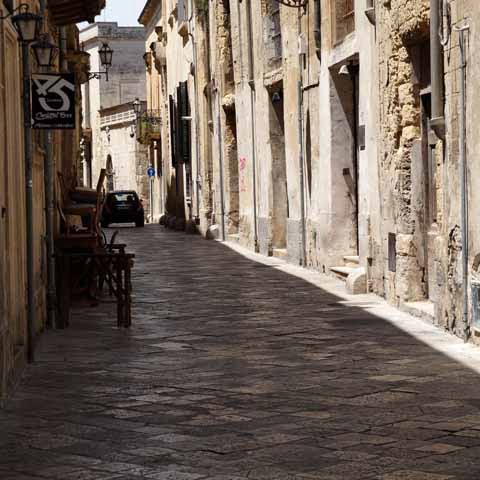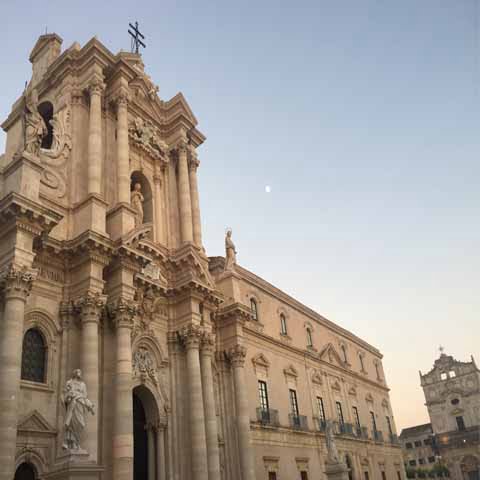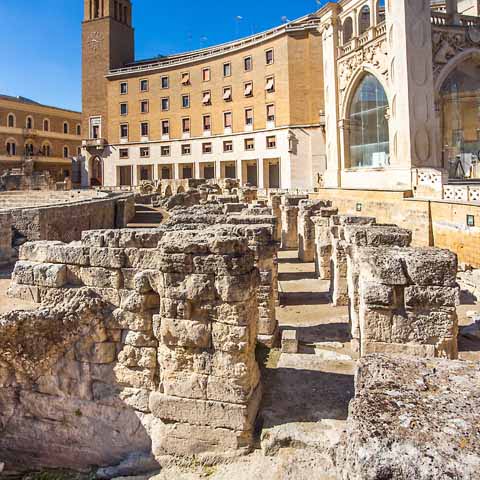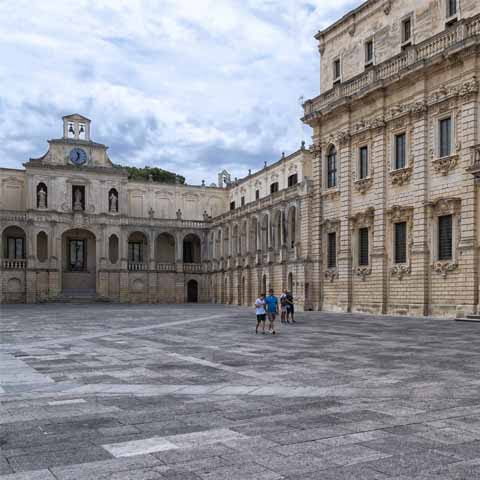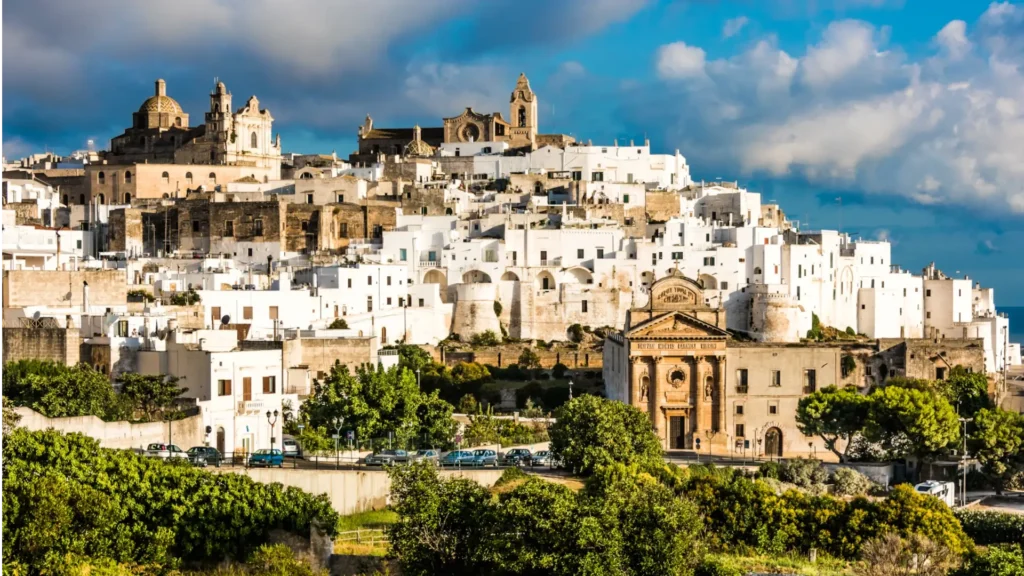The enchanting city of Lecce, located in Southern Italy on the Salento Peninsula, is truly one of Italy’s crown jewels. To walk the city streets amongst the superb Baroque architecture, quaint cafes, and even street performances is to experience the very essence of Italian charm. The culture, cuisine, and activities of this city are best enjoyed when spread out over several days and relished at a slower pace dictated by Italian custom, which encourages visitors to savor each and every moment.
Lecce is a city of nearly ninety-five thousand people. As the capital of the province of Lecce and the main city of the Salento Peninsula, Lecce serves as a cultural hub for the surrounding area. Popular legend dictates that Lecce, once known as the city of Sybar, existed at the time of the Trojan War and was founded by a Greek tribe called the Messappians. In the ensuing years, the city was under the rule of several different regimes before it became what it is today. However, the Greek influence on Lecce’s culture is still evident in modern times, particularly in the Grecia Salentia towns close to Lecce where griko, an Italian Greek language, is still spoken today.
The city flourished during the seventeenth century and countless stunning churches and monuments were erected at that time. Due to the remarkable Baroque architecture present in Lecce, the city has earned the nickname, “The Florence of the South.” Lecce is also known for international export of pietra Leccese (Lecce stone), a particular type of limestone that is easy to work with, making it a great stone for sculptures or architecture. It is usually mined in large open cast quarries and in addition to being an export, is widely used within the region. In fact, many of the city’s famous Baroque churches and other buildings were constructed using pietra Leccese. Additionally, ceramic production is a local craft and key industry for the city.
Lecce is considered to be an agricultural center for the Salento Peninsula. It is well known for its wine and olive oil production, particularly Terra d’Otranto extra virgin olive oil. This type of olive oil is prized for its fruity taste with slightly bitter and spicy undertones. The olive oil is proudly used to flavor and enhance local cuisine, namely pasta dishes, steamed vegetables, meat dishes, and seafood. In some cases, it is possible for visitors to arrange a tour of one of the olive groves and meet the local farmers.
The province of Lecce is also home to a variety of top-notch vineyards that yield fabulous local wines. Travelers can enjoy wine tasting tours that allow them to see the way vineyards operate as well as taste the proverbial fruits of their labor. Locally crafted wines include Galatina Negroamaro, Alezio, Lizzano, Narzò, Salice Salentino, and Leverano bianco.
If traveling to Lecce by air, the Brindisi Airport is just outside of the city, linking Lecce and the Salento Peninsula to the rest of Europe and the world. Once in Puglia, the most efficient way to explore the Salento Peninsula is by car, either rental car or private driver. By and large, pedestrian traffic rules in the city center and exploring on foot is the best way to take in the sights and sounds of the area.
With an active industrial and agricultural center, Lecce is a busy city that is always bustling with activity. Touring the city during the daytime allows visitors to appreciate the dozens of buildings with stunning Baroque style architecture. However, for many, at nightfall Lecce takes on a magical dream-like quality as people leisurely stroll the streets enjoying one another’s company under the elegant street lamps that bathe the city in a romantic glow.
GEOGRAPHY
The city of Lecce is located on the Salento Peninsula in Southern Italy, but is positioned far enough inland that it does not sit on the Adriatic coast. It is the main city on the peninsula and the capital of the province of Lecce.
Despite Lecce’s large population, it has one of the smaller historic city centers in Italy. While it is not unusual to find a number of cultural activities happening in the squares that attract an audience, many visitors prefer to spend the majority of their time wandering the quaint cobblestone streets between city buildings to dine at outdoor restaurants and take in gorgeous architecture at almost every turn.
CLIMATE
Overall, Lecce enjoys a largely Mediterranean climate. On average, the temperature here hovers around seventy degrees Fahrenheit, although lows can dip into the forties during the winter and the highs can reach the high eighties in the summer. Rainfall is rather minimal during the summer, but steadily increases in the fall and winter. This fabulously comfortable climate is a primary reason for the area’s success with productive olive groves and vineyards.
ONLY IN LECCE
By far, Lecce’s defining characteristic is the remarkable Baroque architecture found in the historic city center. The style flourished during the seventeenth century while the city was under Spanish rule, and is so distinctive that it is referred to as Leccesse Baroque. An integral aspect of Leccese Baroque is use of the local pietra Leccese, which imparts warm and golden hues during different points of the day. Some of the most stunning examples of Baroque architecture in Lecce are the city’s many churches. Principal among these is the Cathedral of Santa Maria Assunta, which was originally constructed in the twelfth century before undergoing a magnificent Baroque reconstruction in the seventeenth century. Other remarkable churches include the Basilica of Santa Croce, the Church of Santi Niccolò e Cataldo, and the Basilica of San Giovanni Battista al Rosario. In addition to the churches, there are certain civic structures that also feature Baroque architecture, such as Palazzo Tamborino Cezzi and the surviving city gates known as Porta Napoli, Porta Rudiae, and Porta San Biagio. It can be quite overwhelming to imagine how many people have passed through the city gates to Lecce over the centuries. Truly, Lecce’s Baroque churches and civic structures are all simply stunning pieces of architecture that are just a small taste of the beauty within this grand Italian city.
The city of Lecce awaits you with unique treasures of legendary Baroque architecture, fabulous authentic cuisine, and warm and generous people. Be forewarned, this magical Italian city may very well steal a piece of your heart, pushing you to return to your home away from home again and again.
Travel Guides
The Apulia Region of Italy
The Cities of Apulia, Italy

